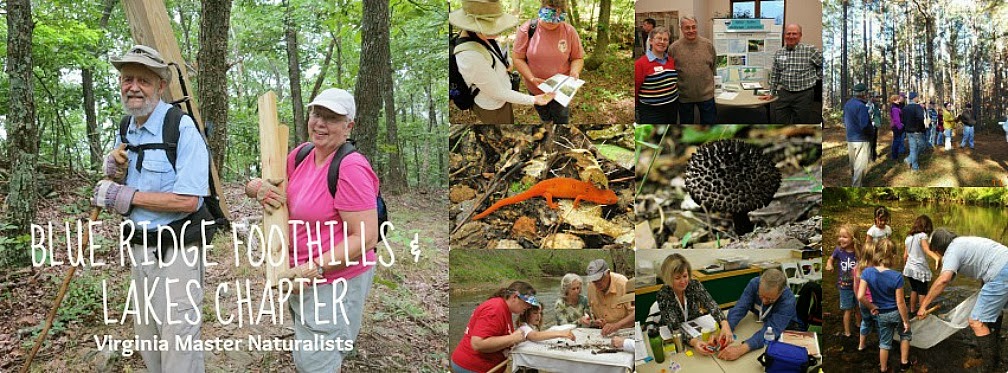 De English, VMG, VMN, Virginia Save Our Streams
De English, VMG, VMN, Virginia Save Our StreamsBy Meg Brager 11/2/11
On Oct. 22, 2011, a Waterwise Landscaping Workshop was held at W.E. Skelton 4-H Center at Smith Mountain Lake hosted by the Franklin County Master Gardner Association. It included learning sessions on Water Quality and the Home Landscape and Waterwise Plant Selections, as well as a panel presentation of two local water quality projects, Save Our Streams and Buffer Landscaping.
Nowhere is human impact on the natural world more apparent than in our water supply. Although 70% of our planet is covered in water only about 3% of that is freshwater, an element required by every living thing on earth. That freshwater supply is shaped by rainfall, snowmelt, runoff and infiltration, and varies throughout the seasons and across the landscape.
The first session in the workshop was presented by Laurie Fox, Ph. D., a horticulture associate from Virginia Tech, who had travelled from Virginia Beach to be there. She discussed our Watersheds (there are 9 in Virginia), their importance to a healthy environment and how we as individuals can help protect water quality: for example, reducing daily water usage, minimizing use of fertilizer, creating riparian buffers along waterways and volunteering for conservation programs. Simply being aware of how and where storm water flows across your own property, and mitigating erosion and runoff of soil, fertilizer, pesticides and other chemicals can have a big impact. Pay attention to the sheer volume of water coming off your roof and driveway during a heavy rain, it’s pretty amazing ! She also introduced us to coir logs (made from coconut fiber) which can be used to prevent erosion on steep inclines.
The afternoon session on Waterwise Plant Selection was presented by Sandra Reichert, the Community Horticulture Program Coordinator for Green Spring Gardens in Alexandria, Virginia. She emphasized choosing trees, shrubs and perennials that can survive (after establishment) with less watering, and discussed the characteristics of such plants such as fleshy or hair covered leaves or long taproots. We went home with detailed lists of those plants, separated into small-med-tall trees, groundcovers, shrubs, grasses, vines and perennials for easier selection. Read more here.
The panel discussion on water quality projects was moderated by local Virginia Master Gardener Kathleen Tully. Save Our Streams was presented by De English, who is the local coordinator for VASOS (Virginia Save Our Streams), which involves volunteers who monitor the streams through water sampling and physical collection, identification and counting of macroinvertebrates such as leeches, crayfish and stoneflies, not an easy task when some of these organisms are less than ¼ inch long! The health of a particular stream can be gauged by what is living in it because of the different organism’s sensitivity to pollution. Read more on SOS here.
Buffer Landscaping was addressed by Jim Pilversack, chairman of the Buffer Landscape Committee of SMLA. They are primarily a group trying to educate folks around Smith Mountain Lake about the advantages of buffer gardens and rain gardens as a means of protecting our water, beautifying property and reducing maintenance. Most of the properties around the lake are fairly steep slopes, so anything that can “slow the flow, filter the flow” is helpful. Read more on buffers here.
Finally we toured the Buffer Garden at the 4-H Center which was designed by Leslie Santapaul and planted and maintained by the Franklin County Master Gardeners. It is truly a monument to how buffer gardens can be beautiful and low maintenance.
Thanks go to the local chapter of Virginia Master Gardeners, the Virginia Cooperative Extension and all of the speakers for an interesting and educational day! Those of us who live in Franklin County are lucky to be surrounded by beautiful lakes, streams and rivers, so we all have an obligation to protect those waterways and to insure that they will still be clean and beautiful for future generations.
More on the Virginia Master Naturalist Program here.

No comments:
Post a Comment
Thanks for your comment and interest! NOW GO OUTSIDE!